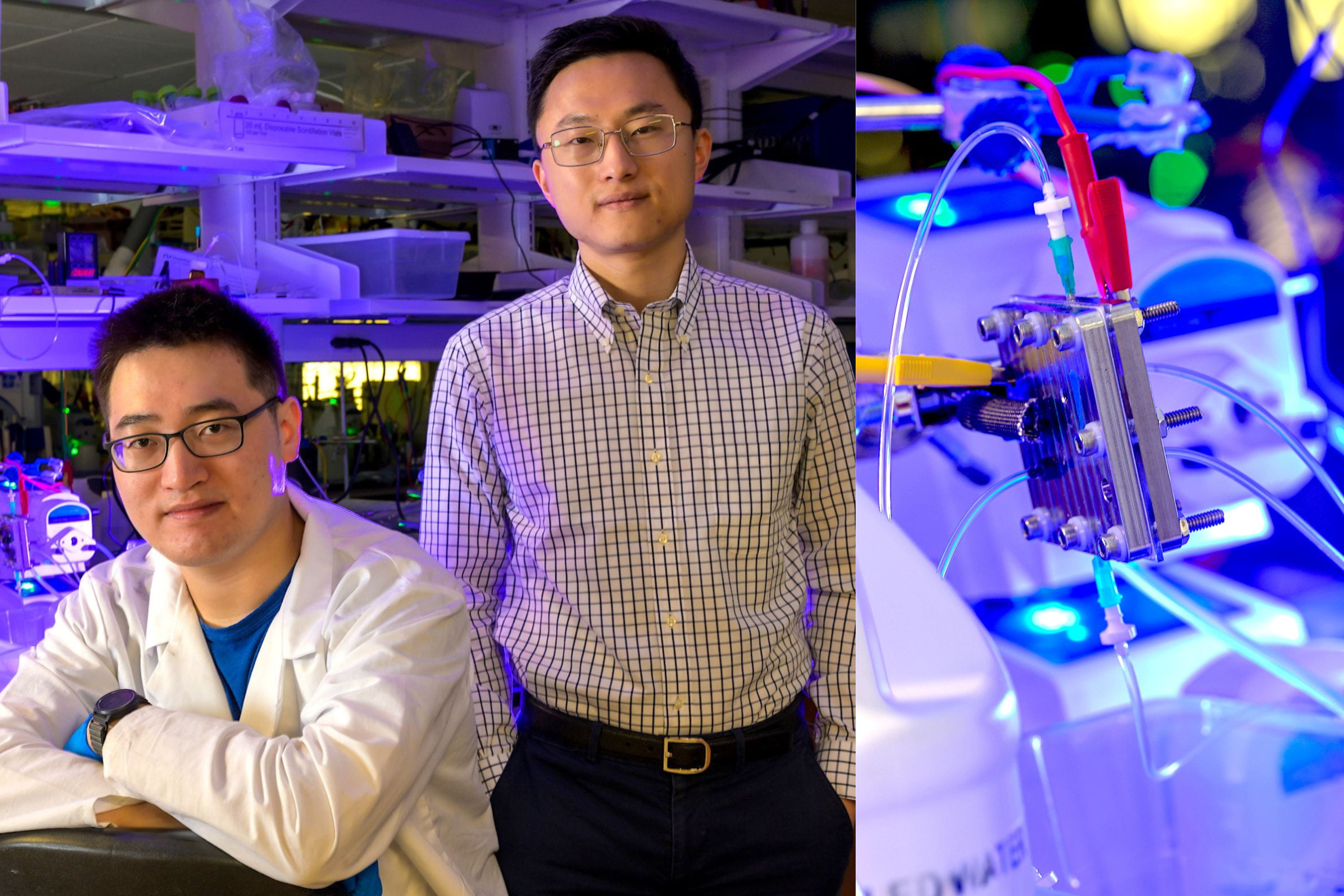small scale, big impact
Rice scientists develop simple but game-changing carbon capture device

Peng Zhu (left) and Haotian Wang developed a carbon-capture device prototype. Photos courtesy Jeff Fitlow/Rice University
A Rice University lab has developed an efficient, scalable way to capture carbon dioxide — and it just needs to be plugged into a power outlet to work.
The new technology developed in the lab of chemical and biomolecular engineer Haotian Wang, the William Marsh Rice Trustee Chair and an associate professor at Rice, uses electricity to remove carbon dioxide from air capture to induce a water-and-oxygen-based electrochemical reaction. The findings were shared in a study published in Nature last month.
Traditionally, carbon capture requires very energy intensive processes that need high temperatures and for the carbon that's been captured to be regenerated. The process also often requires large-scale infrastructure.
In the Wang lab's method, the small reactor can continuously remove carbon dioxide from a simulated flue gas with nearly 100 percent efficiency, generating between 10 to 25 liters of high-purity carbon using only the power of a standard lightbulb, according to a statement from Rice.
It does not create or consume chemicals, nor does it need to be heated up or pressurized, according to Wang. And it only requires a simple power source.
"The technology can be scaled up to industrial settings—power plants, chemical plants—but the great thing about it is that it allows for small-scale use as well: I can even use it in my office,” Wang says in the statement. “We could, for example, pull carbon dioxide from the atmosphere and continuously inject that concentrated gas into a greenhouse to stimulate plant growth. We’ve heard from space technology companies interested in using the device on space stations to remove the carbon dioxide astronauts exhale.”
Wang and lab member Peng Zhu, a chemical and biomolecular engineering graduate student at Rice and lead author on the study, initially made the discovery when working on an earlier version of the reactor intended for carbon dioxide utilization.
During this process Zhu noticed that gas bubbles flowed out of the reactor’s middle chamber when producing liquid products like acetic acid and formic acid, and that the number of bubbles would increase when more current was applied to the reactor.
This led the scientists to realize that the reactor was creating carbonate ions that were converted into a continuous flow of high-purity carbon dioxide after passing through the reactor's solid-electrolyte layer.
“Scientific discovery often requires this patient, continuous observation and the curiosity to learn what’s really going on, the choice not to neglect those phenomena that don’t necessarily fit in the experimental frame," Wang said in a statement.
A number of players in the Houston area have been making headway in carbon capture space in recent weeks.
Earlier this summer, the U.S. Department of Energy granted more than $45 million in federal funding to four Houston companies to promote the capture, transportation, use, and storage of tons of carbon dioxide emissions.
The Rice Alliance also recently named 15 startups to its Clean Energy Accelerator. A number of the fledgling companies are focused on carbon management and capture.